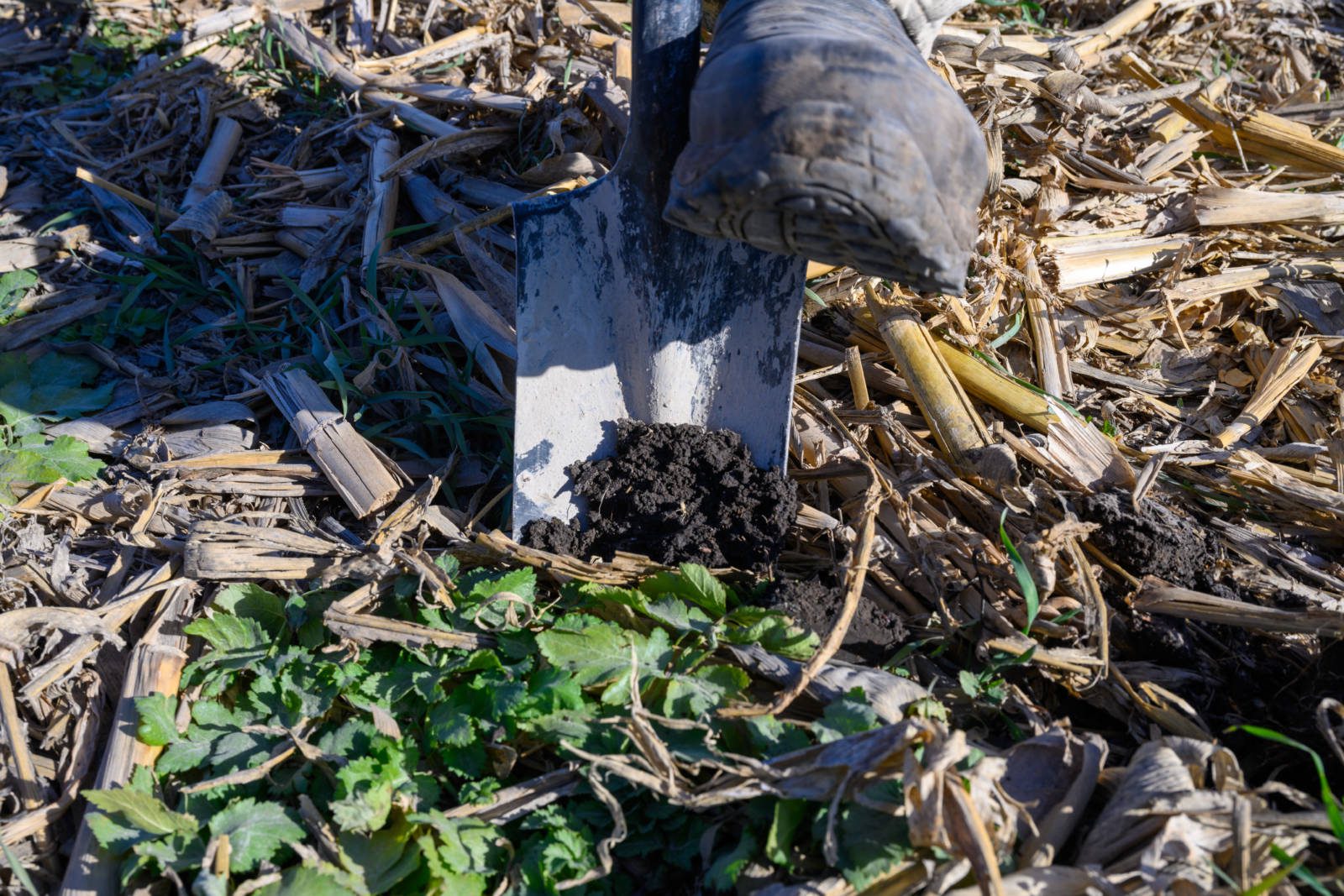Soil health is top of mind for U.S. Soy farmer Kenny Brinker, who grows soybeans and corn in Auxvasse, Missouri. Brinker’s farrow to finish hog operation complements his soy/corn crop rotation.
When Brinker purchased his 1630-acre (660-hectare) farm in 1994, the soil quality was so poor that the pH was in the 4.5 to 5 range with phosphate readings in the single digits. Brinker and his family immediately began to work to build the soil back up through a number of methods, including lime application and adding miles of waterways and terraces, which helped stem erosion.
Erosion control is at the heart of Brinker’s sustainability practices, which include no-till and cover crops. His farm has been 100% no-till since 1998 and he began experimenting with cover crops around 2014. That first year, he planted 500 acres of cereal rye followed by soybeans. Brinker’s experiment went so well that he planted cover crops in all of his fields the following year and has been doing so ever since. “Up here on these prairie soils, the topsoil’s not that deep and if you start losing it,” he says, “it takes a long time for Mother Nature to replace it.”
Brinker also recognizes the value of nutrients in livestock manure being recycled as a natural fertilizer for crops in an environmentally sustainable nutrient cycle. Harvested soybeans come back to his farm as soybean meal that is fed to his hogs – and the nutrients from the hog manure are spread back on the ground again to raise the next crop.
“Sustainability to us is making sure that the land, the resources [are] available to the next generation,” states Brinker. “You know, they’re not making any more crop land.”
